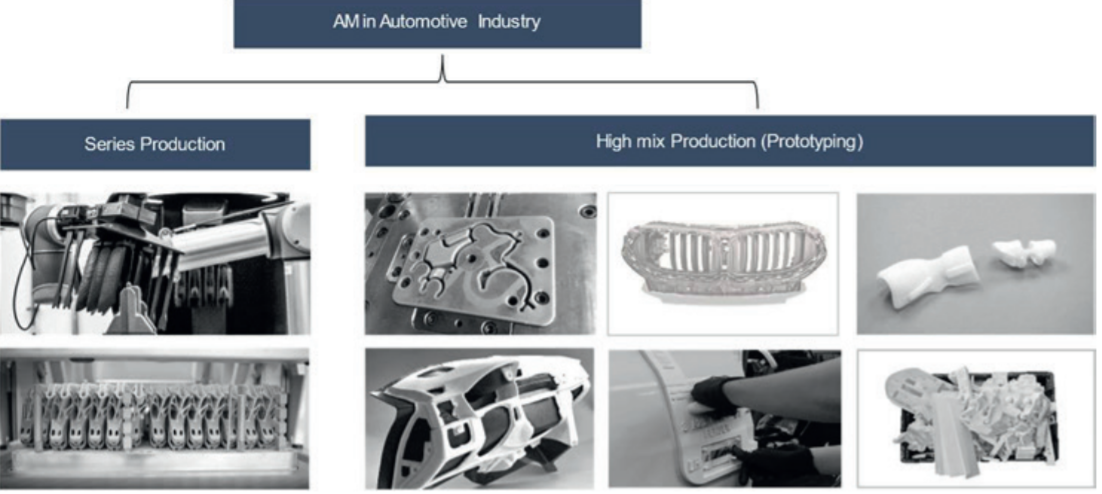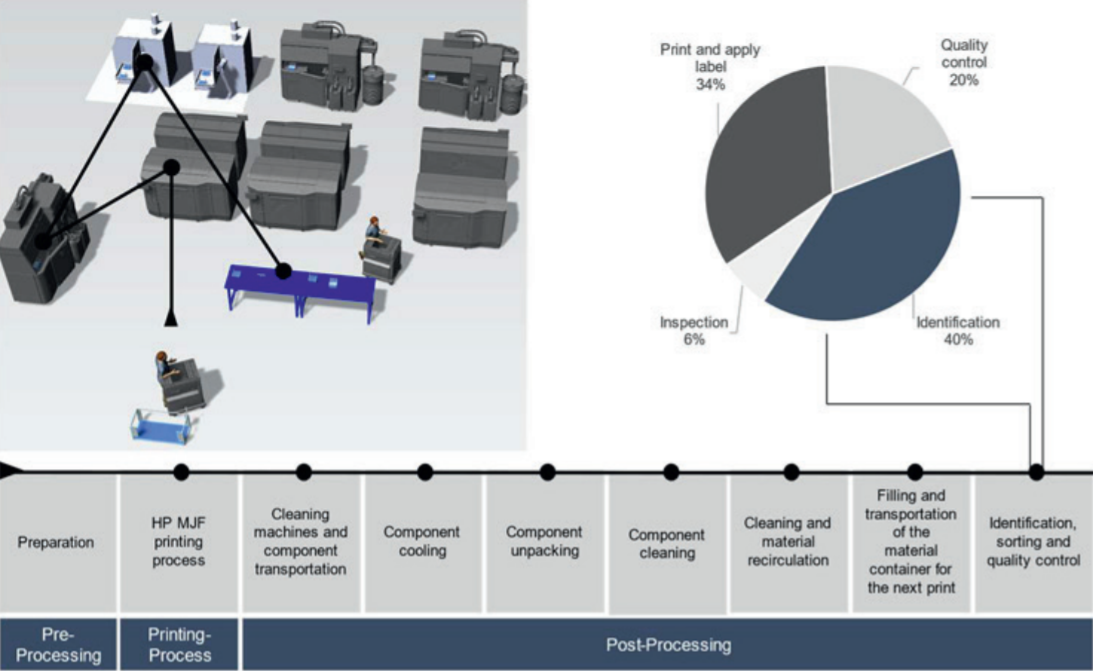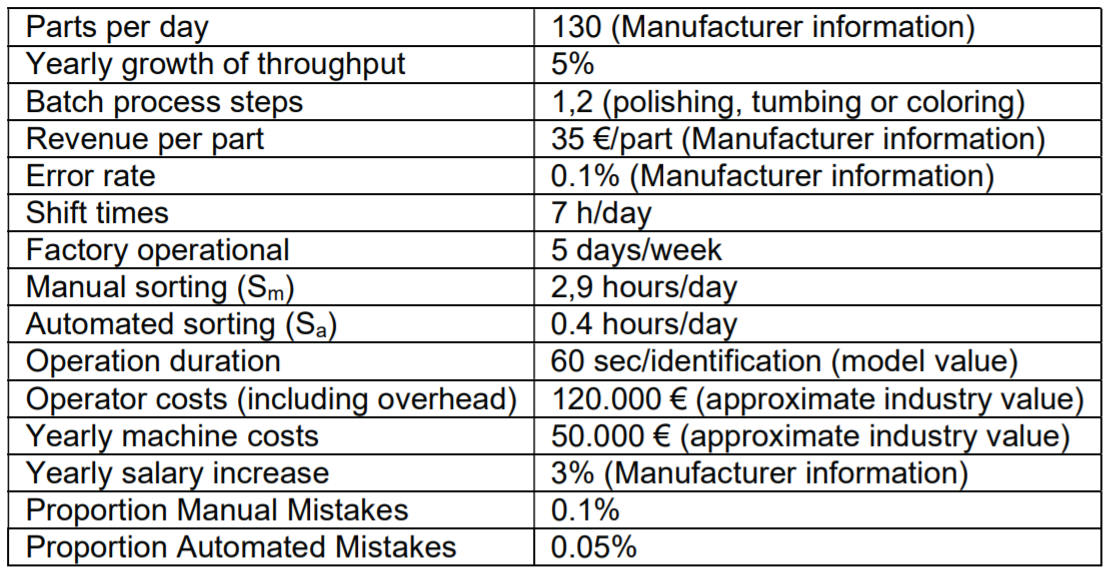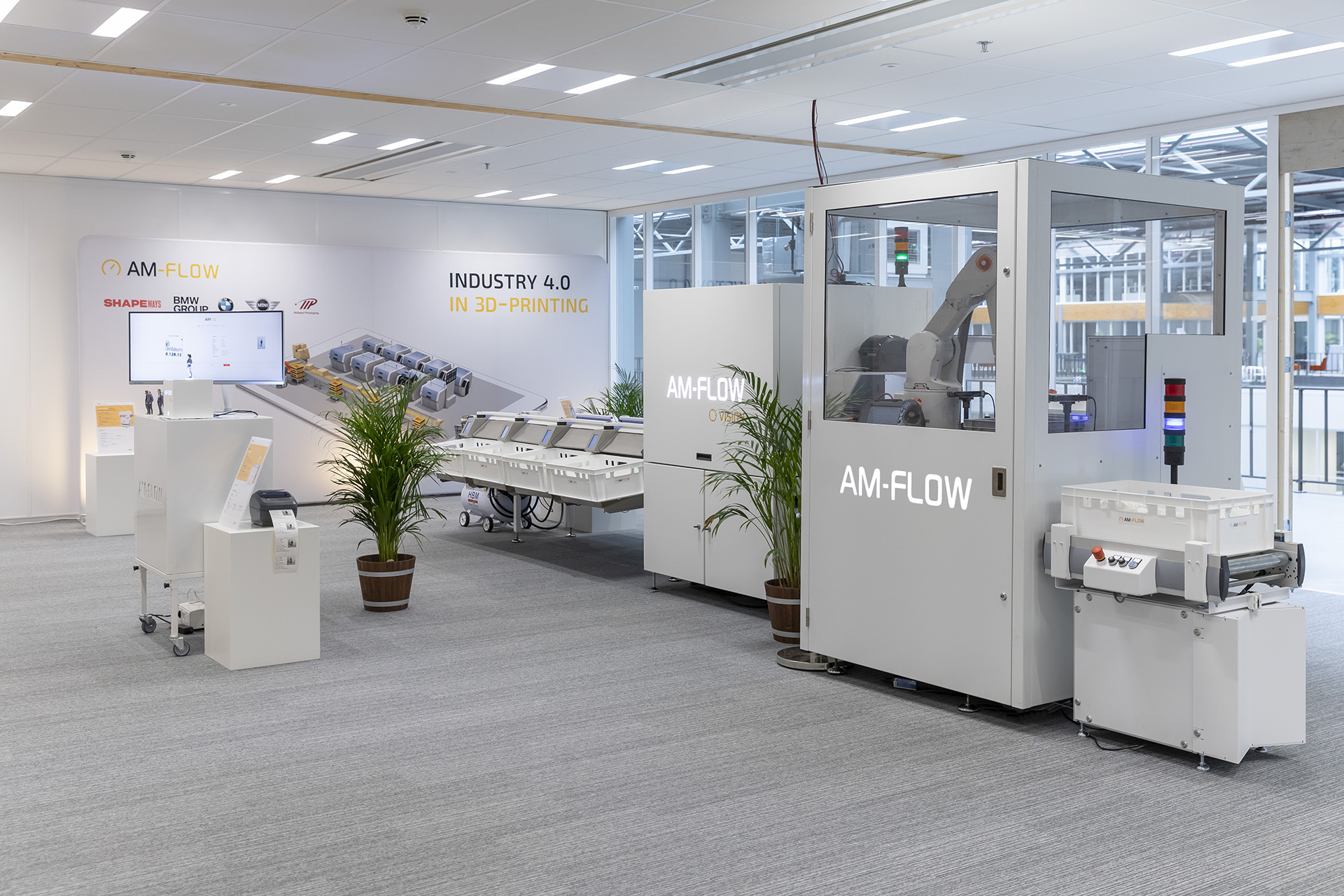With time-to-market in the automotive industry steadily decreasing, the demand for additive manufactured prototyping components is higher than ever. However, in order to make larger 3D printed volumes tangible, process chains still need to be optimized and further developed in regards to output quantity, production speed, and economic viability, according to a new study by German multinational automotive firm BMW.
Having identified a need to further optimize and increase the efficiency of additive manufacturing technologies and their process chains, BMW has conducted research into the complexity and economical value of Artificial Intelligence (AI) for the automated identification of 3D printed parts.
The paper outlines the state-of-play of current available additive manufacturing process chains, the complexities of using AI for part recognition, and the economic viability of using AI-based platforms such as AM-VISION, an automated machine learning part recognition system from Dutch 3D printing, post-processing and automation firm AM-Flow, to further industrialize overall 3D printing process chains.

AM process chains in the automotive sector
The research paper, which has been compiled by authors from BMW, AM-Flow and the University of Duisburg-Essen (UDE), highlights how additive manufacturing’s technological progress is enabling higher production speeds, increased choice of materials, and adjustable robust mechanical properties within parts that resemble those of conventional products. As a result, the technology is being increasingly adopted in industries such as automotive to facilitate new use cases in the field of testing and validating vehicle components.
Greater geometric freedoms enabled by 3D printing have made it possible to produce new structures, shapes and highly personalized and individualized components in series, the researchers said, with the possibility of large-scale production delivering just-in-time to assembly lines emerging.
However, they identified that additive manufacturing process chains still need further optimization and development in order to increase output quantity, production speed, and become economically viable. According to the study, the process chains of many currently available 3D printing technologies still include a large amount of labor intensive work and steps, leading to high personnel costs and lower product throughput. This can also lead to bottlenecks and downtimes in the overall process chain.
The researchers have observed a shift towards automation and industrialization within the additive manufacturing sector in order to address these issues, evidenced by new technologies, applied patents, cross-industry partnerships and government-funded projects. They also point out that the overall additive manufacturing automation market is forecast to grow by 23 percent to a potential revenue of $15 billion within this decade.

Overcoming productivity limits with AI
According to the authors, current additive manufacturing process chains reach a limit of productivity for large production volumes due to machine capacity, runtime and post-processing steps, as well as manual operations such as machine cleaning, preparation, and uploading. One of these manual operations identified specifically by the researchers is the identification and assignment to the customer of the components by labeling the components for further logistical transportation.
Even though part identification is a small part in the overall process chain, it is still a process step that does not scale and requires a high amount of manual work in comparison to other steps such as cooling. Using HP’s Multi Jet Fusion (MJF) technology as an example, the researchers observed that to achieve the lowest cost per part, components are often nested tightly with the support of specialized software. This leads to batches with a large amount of different parts in one build job, meaning the trackability of single components can get lost and the assignment to customer orders needs to be done after the production, which is typically a manual step.
There are currently several methods available that can automatically recognize components based on geometry, such as weighing, point cloud scanning, image recognition, and computer tomography. However, each of these techniques has its drawbacks in terms of accuracy and cost. Innovation in the field of AI, though, has made the necessary combination of flexibility and automation feasible thanks to the development of deep learning algorithms that mimic human strategic thinking, the researchers said.
AI has already been utilized within the 3D printing sector for some time for component screening, generating complex designs, and monitoring quality control. Despite this, the researchers state that until now there has been no automated solution on the market capable of solving the complexities of automated component recognition of different geometries.

Evaluating AM-VISION for identifying AM components
AM-VISION is an industrial system for identifying additive manufactured components based on their unique geometry. The system is developed by AM-Flow, one of the winners of the Formnext 2020 Start-Up Challenge, and is the flagship product of the company’s 3D printing and post-processing software offerings.
AM-VISION uses 3D shape recognition to enable rapid and reliable identification of 3D printed parts based on their geometry. Once these parts are identified, they can be sorted, handled, picked, and transported by the company’s other software programs AM-SORT, AM-PICK, and AM-ROUTE. In October, the company raised $4 million in Series A funding to build on its suite of AI-based robotics solutions and catalyse a “step-change” in 3D printing automation.
The researchers carried out a series of evaluations on the AM-VISION system, and also investigated the software’s economic viability. Test studies of build jobs containing a high geometry mix proved the system saved time during identification and labeling, with components able to be processed 50 percent faster compared to manual operation.

By integrating final machine set ups in the production line with an automated one-way conveyor belt, AM-Flow estimates that processing time can be improved by between six and 10 times, while the recognition rate of components is between 80 and 95 percent if the build job contains a high diversity of geometries.
However, studies of panels that differed only by finely embossed and engraved patterns on one surface showed that AI is not yet sufficient for differentiation at that scale. As such, the researchers suggested that the business case for AI-driven identification of 3D printed parts depends on factors such as parts produced per day, failure costs, full time equivalent and labor costs, in order to calculate a cost comparison to manual operations.

Future industrialization of the AM process chain
From their study, the researchers observed that while the production process itself is often digital and automated, a “high proportion” of manual work is required in the post-processing stage. They also highlighted that new developments and improvements in increasing the output quantity have led to higher efforts in component identification, and the deployment of AI in this space has thus far been effective.
The study confirmed that AM-Flow’s AM-VISION system is able to perform reliable object detection of high mixed additive manufactured components based on a partial representation of a part’s geometry, which resulted in a reduction of throughput time and subsequent cost savings. Saying this, the authors emphasized the importance of choosing the right field of application for automated identification, as identical parts, parts that differ only slightly, and those manufactured in too little a volume are not yet economically viable for this technology.
During testing, the AM-VISION system experienced continuous improvement to its deep learning algorithm which helped to distinguish mirror-inverted automotive components. Going forwards, using point clouds to measure dimensional accuracy could help to enable automated quality control, as could laser triangulation, the researchers suggested. With these additions, they believe 3D printed series components could be identified by fine patterns, serial numbers, or small data matrix codes coded into the geometry.
The researchers concluded: “The current available automated identification of a high mix at high volume with the AM-VISION is already another step towards a large-scaled AM production.”
Further information on the study can be found in the paper titled: “Complexity and economical value of Artificial Intelligence for automated and industrialized recognition of additive manufactured components,”. The study is co-authored by P. Obst, W. Nasser, S. Rink, G. Kleinpeter, B. Szost, D. Rietzel, and G. Witt.
Nominations for the 2021 3D Printing Industry Awards are now open, have your say who is leading the industry now.
Subscribe to the 3D Printing Industry newsletter for the latest news in additive manufacturing. You can also stay connected by following us on Twitter and liking us on Facebook.
Looking for a career in additive manufacturing? Visit 3D Printing Jobs for a selection of roles in the industry.
Subscribe to our YouTube channel for the latest 3D printing video shorts, reviews and webinar replays.
Featured image shows AM-Flow’s hardware solutions are designed to scale post-production processing. Photo via AM-Flow.


